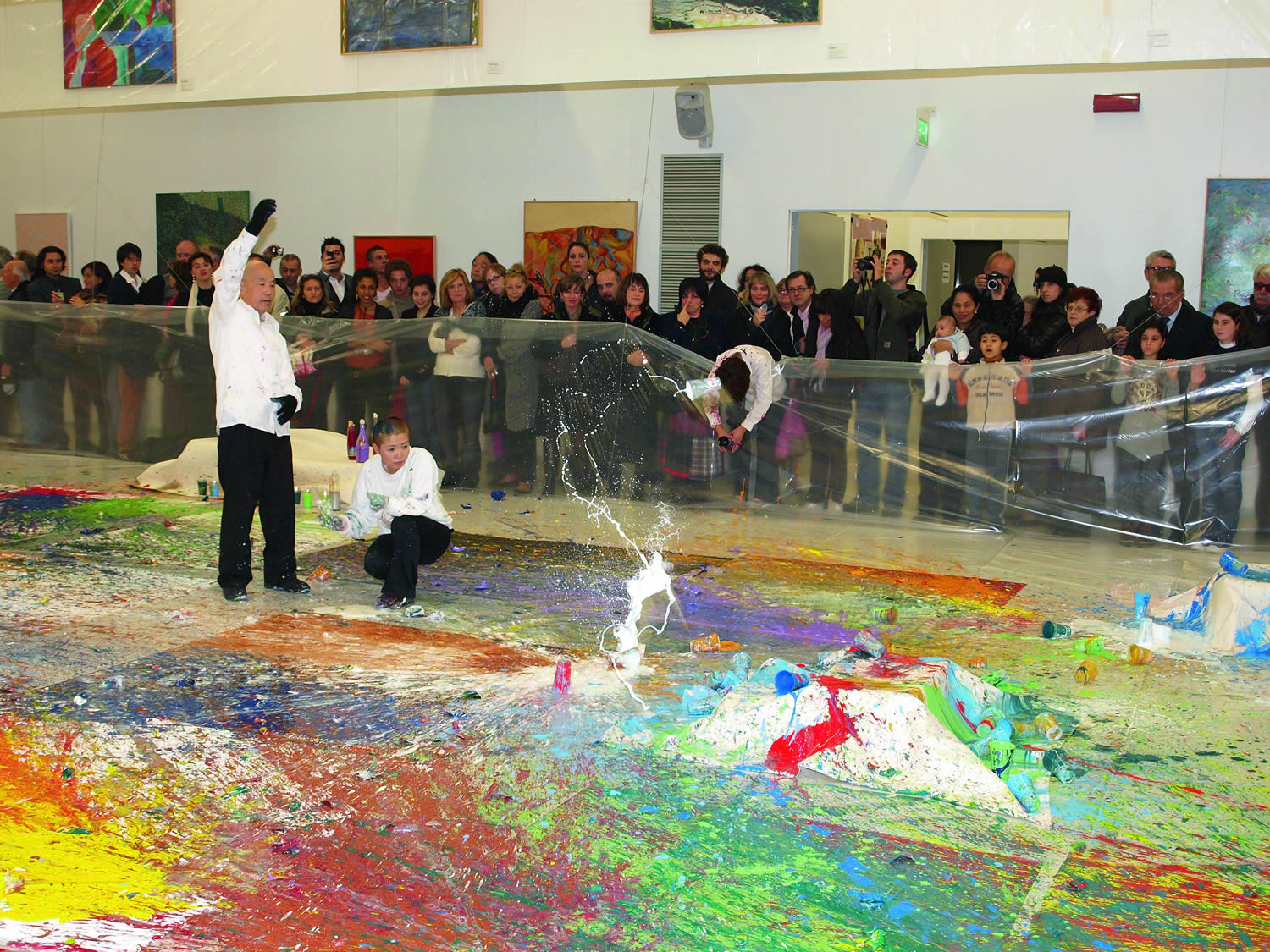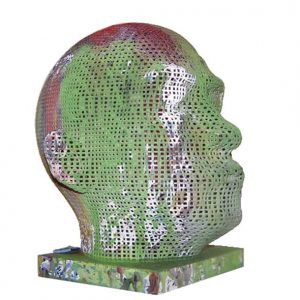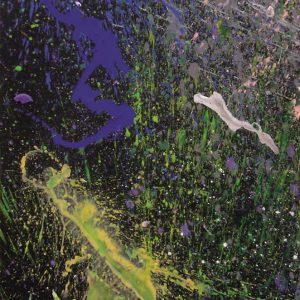The performance at Magi museum
The section dedicated to Shozo Shimamoto (Osaka, 1928) shows a highly suggestive event that the Japanese artist was featured at MAGI in November 2008.
The polyethylene clippings smeared with color displayed in the museum are fragments of a large sheet lying on the floor for an intense performance (here documented by a video) during which, under the eyes of a large audience, Shimamoto in music time acted throwing heavily and randomness different containers of color on a long stretch of canvas and sculptures of heads.
The improvisation and dramatized action, the ritualized vehemence of color, the interpretation of the artistic act as a transgressive and recreational performance are characteristic methods of his personal research, carried on mostly within the Gutai Movement, of which the artist has been one of the leaders and to which he gave the name.
Gutai, a word that indicates the conflict between matter and spirit, express the will to leave the strong Japanese calligraphic tradition, innovating the rules and expressive forms. In the mid Fifties Jiro Yoshihara (1905-1972), promoter of the movement, inspired by the U.S. action painting , began a process of instinctive release from the matter, where the body drags the artist to live art as a total experience, breaking with space dimensions and hybridizing painting and theater. Soon Shimamoto approached to this line, establishing as one of the most convincing and original interpreters of experimental art of the second postwar period.





